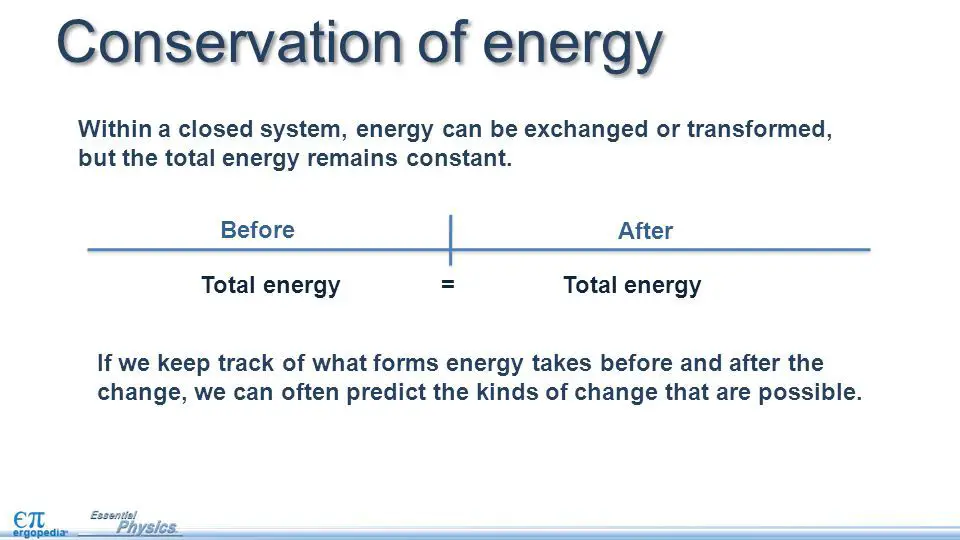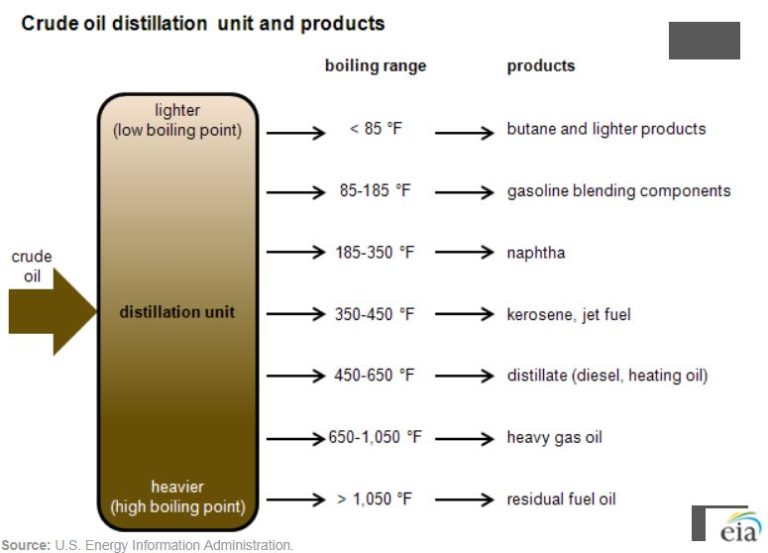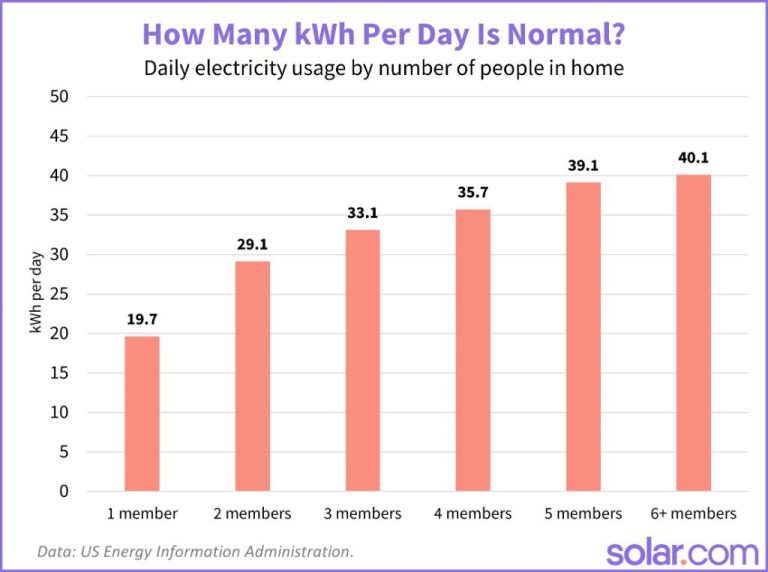Can We Change The Form Of Energy?
Energy is the ability to do work or produce change. It exists in many different forms that can often be converted from one form to another. The main forms of energy include potential energy, kinetic energy, thermal energy, electrical energy, nuclear energy, luminous energy, and sound energy.
This article will provide an overview of the different forms that energy can take, and explain how energy can be converted from one form to another through various processes. We will explore real-world examples of energy conversions and discuss some of the limitations imposed by the laws of thermodynamics.
By the end, you will have a deeper understanding of the nature of energy and how we harness it for human purposes. Knowing how to manipulate energy efficiently is key for powering our modern society.
Potential vs Kinetic Energy
Potential energy is stored energy that an object has due to its position or state. For example, a ball held at the top of a hill has potential energy due to gravity. As the ball rolls down the hill, this potential energy gets converted into kinetic energy, which is energy of motion. Other examples of potential energy include chemical energy stored in molecules, elastic potential energy stored in stretched springs, and nuclear energy bound up in the nuclei of atoms.
Kinetic energy is energy of motion that an object possesses. A moving car, rolling ball, or flowing river all have kinetic energy. The faster an object moves, the more kinetic energy it has. Kinetic energy can also be transferred between objects during collisions. For example, when a cue ball strikes another ball and causes it to move, kinetic energy is transferred from the cue ball to the other ball.
Converting Potential to Kinetic
One of the most common ways to convert potential energy into kinetic energy is through falling objects. When an object is held at a height above the ground, it contains gravitational potential energy. When released, this potential energy converts into kinetic energy as gravity accelerates the object downward. The higher the initial height, the greater the initial potential energy and final kinetic energy.
For example, think about dropping a book from a desk versus dropping it from the top of a staircase. The book on the desk converts less potential energy and gains less kinetic energy by the time it hits the floor. But when dropped from the top of the stairs, it builds up more speed and kinetic energy thanks to the greater initial potential energy.
Chemical reactions can also convert potential energy stored in molecular bonds into kinetic energy as heat and light. In an exothermic reaction like combustion, the potential energy stored in the chemical bonds of the fuel is released. This potential energy becomes the kinetic energy of the heat, light, and motion produced by the reaction.
Nuclear reactions similarly convert nuclear potential energy into kinetic energy. Nuclear potential energy exists within an atom’s nucleus. When the nucleus splits in nuclear fission or atoms fuse together in nuclear fusion, this potential energy transforms into the kinetic energy carried by the emitted particles and radiation.
Converting Kinetic to Potential
Kinetic energy can be converted into potential energy through various methods. Here are some common examples:
-
Lifting an object upwards increases its potential energy due to gravity. The kinetic energy used to lift the object is transferred into gravitational potential energy.
-
Pumping water into an elevated tank converts the kinetic energy of the pump into the potential energy of the water as it sits in the heightened tank.
-
Winding a spring or stretching a rubber band creates elastic potential energy from kinetic energy.
-
Charging batteries converts kinetic energy (often originally generated from coal, natural gas, solar panels, etc) into the chemical potential energy stored in the battery.
-
Raising weights upwards at the gym converts kinetic energy into gravitational potential energy.
In all these examples, kinetic energy from motion, fuels, or prior processes is converted into potential energy for later use. This energy storage and transfer is a key process in physical systems.
Thermal Energy
Thermal energy refers to the internal energy present in substances due to the motion and vibration of their molecules and atoms. It is directly associated with the temperature of matter. The higher the temperature, the greater the thermal energy.
Thermal energy can be generated through friction. When two surfaces rub against each other, their vibrations cause microscopic collisions that convert kinetic energy into thermal energy. For example, rubbing hands together warms them up through friction.
Heat produced during combustion is another example of thermal energy. In chemical reactions like burning, stored chemical energy is released and converted into thermal energy. The thermal energy produced raises the temperature of the surroundings. That is why we feel warmth near a fire.
Thermal energy can also be produced from other energy forms like mechanical, electrical, sound and light energy. Mechanical devices like engines and electric appliances like heaters convert stored energy into thermal energy. Overall, thermal energy is a versatile form of energy that can be generated from various sources through different processes.
Electrical Energy
Electrical energy refers to the movement of electrons, which can then be harnessed to provide power. There are several ways we can convert other forms of energy into electrical energy:
Generators – Generators convert mechanical energy into electrical energy. They work through electromagnetic induction – when a magnet moves past a conductor like a wire, it causes electrons in the wire to move, creating an electrical current. Sources of mechanical energy like wind turbines, hydroelectric dams or steam turbines are connected to generators to produce electricity.
Batteries – Batteries store chemical energy and convert it into electrical energy through electrochemical reactions. Primary batteries can only be used once, while rechargeable batteries can convert electrical energy back into chemical energy to be reused. Common battery types include alkaline batteries, lithium-ion batteries and lead acid batteries.
Photovoltaic cells – Also known as solar cells, photovoltaic cells convert light energy from the sun directly into electrical energy. Photons from sunlight knock electrons loose in the cell, creating an electrical current. Solar panels consist of many solar cells and are used to convert sunlight into electricity.
Piezoelectric effect – Certain materials like quartz crystal produce an electrical charge when mechanical stress is applied. Piezoelectric generators harness this to convert mechanical energy from movement or vibration into electrical energy. This allows small-scale electrical energy harvesting from sources like walking.
Electrical energy powers much of the modern world. Being able to convert many other energy forms into electricity gives us an efficient and easily transported energy source for our homes, workplaces and portable devices.
Nuclear Energy
Nuclear energy comes from the splitting (fission) or merging (fusion) of atomic nuclei. The energy that holds the nucleus together is known as “nuclear binding energy.” Converting a small amount of mass into nuclear energy produces a tremendous amount of energy, according to Einstein’s famous equation E=mc^2.
In nuclear fission, the nucleus of a heavy atom like uranium or plutonium is split into two smaller nuclei, releasing energy in the process. Nuclear power plants use nuclear fission to heat water and produce steam, which spins a turbine to generate electricity. Fission is a chain reaction, where the neutrons released from one split atom strike other atoms and cause them to split in turn. Fission reactions can be controlled and sustained, producing a steady supply of energy.
Nuclear fusion works by fusing together light nuclei into heavier atoms, also releasing energy. This is the process that powers stars like our sun. Fusion requires immense pressure and temperature to force nuclei close enough together to fuse. While fusion holds tremendous promise as an energy source, the conditions have proven difficult to achieve in a controlled and sustained way for power generation so far.
In both fission and fusion reactions, tiny amounts of mass are converted into enormous amounts of energy, according to Einstein’s famous equation. This makes nuclear power extremely energy dense, capable of providing large amounts of power from very small amounts of fuel.
Luminous Energy
Luminous energy is the energy of electromagnetic radiation that is visible to the human eye. This includes light emitted from sources like the sun, flames, and light bulbs. Luminous energy is unique because we can directly perceive it in the form of brightness and color.
We can convert other forms of energy into light through processes like incandescence and luminescence. Incandescence involves heating a material like a metal filament until it emits visible light. This is how traditional incandescent light bulbs work. LEDs on the other hand produce light through electroluminescence, which involves exciting electrons in a semiconductor to release photons of light.
No matter the process, producing visible light always requires converting some other form of energy like electrical or thermal energy. The color and intensity of the emitted light depends on factors like the temperature and material composition. So while light appears different to our eyes, it all stems from converting other energies into the electromagnetic radiation we can see.
Sound Energy
Sound energy is the energy produced by vibrations. When an object vibrates or moves back and forth rapidly, it causes vibrations in the air particles around it. These vibrating air particles transmit energy in the form of sound waves. The vibration and movement of the air particles is what we perceive as sound.
Many different forms of energy can be converted into sound energy. For example, electrical signals from an electronic device can be converted into sound vibrations using speakers or headphones. The speakers contain a flexible cone that pushes and pulls on the air to create sound waves that travel to our ears. The electrical signals make the speaker cone vibrate at different frequencies to produce different sounds.
In musical instruments, mechanical energy is converted to sound. When you pluck a guitar string, the stored potential energy in the string is released. As the string vibrates, it causes the surrounding air particles to also vibrate, producing sound waves. Similarly, when you hit a drum, the mechanical energy of your hands makes the drum skin vibrate and produce sound.
Even nuclear energy can be converted into sound energy. In sonoluminescence, short bursts of sound are directed at small air bubbles in water. This causes the bubbles to quickly collapse, converting the sound energy into light and heat energy.
So in summary, sound energy is the energy of vibrating particles. Many other forms of energy can be converted into the mechanical vibrations that create sound. Devices like speakers, musical instruments, and other methods transform energy into the motion that vibrates air molecules to make the sounds we hear.
Conclusion
In summary, energy can exist in many different forms like kinetic, potential, thermal, electrical, nuclear, luminous, and sound energy. We can convert energy between these different forms through various processes. For example, we can convert potential energy to kinetic energy when an object falls. Or we can convert kinetic energy to electrical energy in a generator. The important takeaway is that energy itself is never created or destroyed – it just changes forms. While energy can change forms, the total amount of energy in a closed system always remains constant. Understanding how to convert energy between different forms gives us tremendous power to harness energy for human needs.





